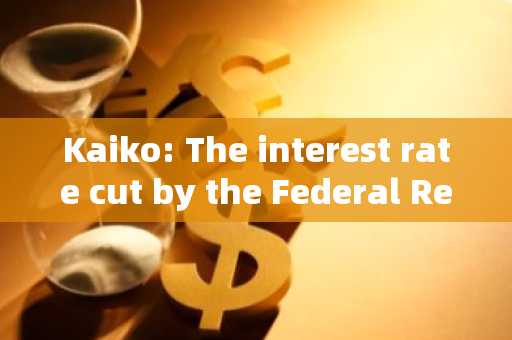Kaiko: The interest rate cut by the Federal Reserve is unlikely to limit the attractiveness of token
The interest rate cut usually weakens the attractiveness of fixed income assets, but Kaiko, a cryptocurrency research company, believes that even in the face of the expected interest rate cut by the United States Federal Reserve, tokenized treasury bond will continue to attract investors.

Kaiko stated in a report released on Monday (19th) that the BlackRock USD Institutional Digital Liquidity Fund (BUIDL), which will be issued in March 2024, is one of several tokenized funds launched in the past 18 months. These funds provide exposure to traditional debt instruments, with the majority investing in short-term US Treasury bonds.
Data shows that BUIDL has attracted over $520 million in capital inflows to date, quickly becoming the largest on chain fund under asset management. Other major on chain funds include Franklin Templeton's FBOXX, Ondo Finance's OUSG and USDY, and Hashnote's USYC, each offering returns comparable to the federal funds rate.
With the rise of the trend surrounding these tokenized funds, the flow of funds from on chain funds and the secondary market activities of related tokens have increased. However, as the hype subsides, the inflow of funds into tokenized funds may face resistance due to changes in the US interest rate environment.
Since the market crash on August 5th, the argument that the Federal Reserve is lagging behind the situation and needs to be more proactive in cutting interest rates to avoid recession has gradually increased. Currently, the market estimates that it will cut interest rates by 100 basis points this year. Last week's weaker than expected US inflation data consolidated expectations for a rate cut in September. However, cutting interest rates does not necessarily mean relaxing monetary policy. Kaiko wrote:
If the Federal Reserve lowers nominal interest rates but inflation decreases at the same or faster rate, real interest rates (i.e. inflation adjusted nominal interest rates) may remain stable or even rise. In fact, the real federal funds rate adjusted by the Producer Price Index (PPI) - a measure of firms' pricing power - has risen moderately this year, even if the Federal Reserve keeps nominal interest rates stable
Kaiko believes that if real interest rates remain stable, the potential stimulus effect of the Federal Reserve's interest rate cuts may be weaker than expected. In this case, compared with risky assets, treasury bond may still be attractive, because investors may prefer liquidity and security rather than risk.
